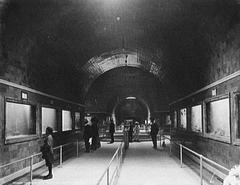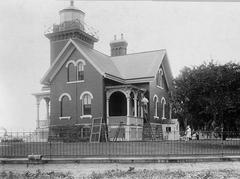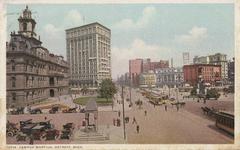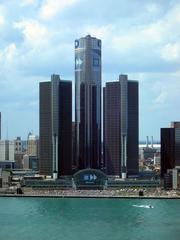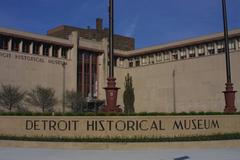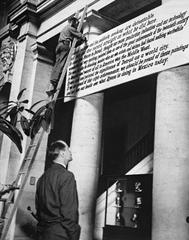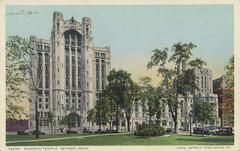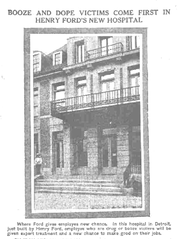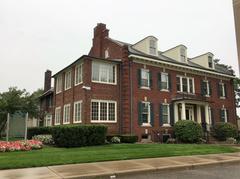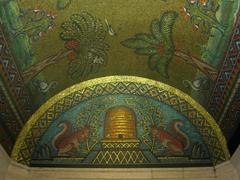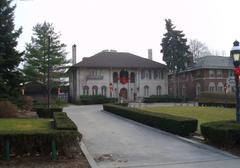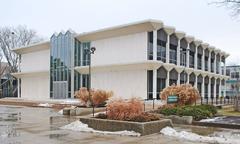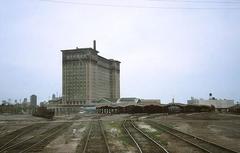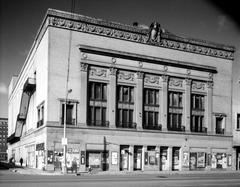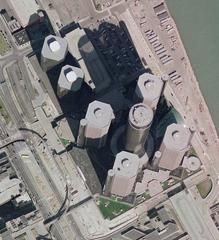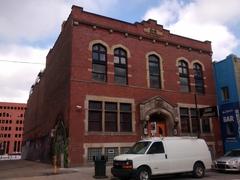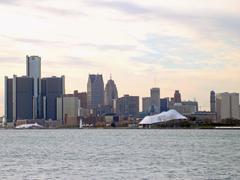
Chapel of St. Theresa–The Little Flower Detroit: Visiting Hours, Tickets, and Comprehensive Guide
Date: 04/07/2025
Introduction
The Chapel of St. Theresa–The Little Flower once stood as a vibrant testament to Detroit’s rich Catholic heritage. Founded to honor St. Thérèse of Lisieux and serve Detroit’s growing Catholic community, the chapel’s story is one of faith, resilience, and community adaptation. Although permanently closed in 2015 and demolished in 2023, its spiritual legacy endures—especially through the National Shrine of the Little Flower Basilica in nearby Royal Oak and the broader network of Catholic pilgrimage sites in Metro Detroit. This guide offers a detailed history, architectural highlights, practical visitor information, and tips for exploring Detroit’s living Catholic heritage.
Table of Contents
- Historical Overview
- Spiritual and Cultural Legacy
- Visitor Information
- Frequently Asked Questions (FAQ)
- References and Further Reading
- Conclusion
Historical Overview
Origins and Founding
Constructed in 1926 at 46 Parsons Street in Midtown Detroit, the Chapel of St. Theresa–The Little Flower was designed by Donaldson & Meier to meet the needs of the expanding Catholic population during Detroit’s economic boom. The chapel was dedicated to St. Thérèse of Lisieux—canonized the previous year and widely venerated for her “Little Way” of spiritual simplicity. Its establishment was prompted by a surge of devotion, notably a nine-day novena led by Bishop Gallagher that drew large crowds and inspired the creation of a dedicated space for prayer and worship (detroit1701.org; Urbanize Detroit).
Architectural Significance
The chapel exemplified Neo-Romanesque style, blending Spanish and Italian influences. Key features included:
- Elegant entrance arches
- Striking rose window
- Twin symmetrical bell towers
Its design fostered a sense of reverence and community, providing a safe, accessible place for Mass and school functions, especially for students of the adjacent Saints Peter and Paul Academy (detroit1701.org).
Key Milestones and Decline
After the 1993 fire destroyed St. Patrick’s Church, the chapel became the congregation’s new home. In 1997, it was listed on the National Register of Historic Places for its architectural and cultural value (Waymarking). However, as Detroit’s population declined, so did the chapel’s membership—falling to around 70 by 2015. It was closed and deconsecrated, and after years of vacancy and unsuccessful preservation efforts, the chapel was demolished in September 2023 (Urbanize Detroit).
Spiritual and Cultural Legacy
Despite its loss, the chapel’s legacy endures through:
- The ongoing devotion to St. Thérèse of Lisieux, whose message of humility and faith continues to inspire Detroit’s Catholic faithful (littleflower.org).
- The preservation of key artifacts (stained glass, statues, liturgical items) in other parishes and museums.
- The continued community outreach at St. Patrick’s Senior Center, adjacent to the former chapel site (Urbanize Detroit).
- Annual commemorative Masses and events at the National Shrine of the Little Flower Basilica in Royal Oak.
The story of the Chapel of St. Theresa–The Little Flower echoes the broader narrative of Detroit’s Catholic church history—marked by growth, adaptation, and the preservation of community identity in changing times.
Visitor Information
Current Status of the Chapel
- The Chapel of St. Theresa–The Little Flower is no longer open or standing; it was demolished in 2023 and is not accessible to visitors.
- No regular Masses, tours, or public events are held at the original site.
Detroit Catholic Heritage Sites to Visit
For those seeking to connect with this legacy, consider these prominent sites:
National Shrine of the Little Flower Basilica, Royal Oak
- Location: 2100 W. 12 Mile Road, Royal Oak, MI
- Significance: A national shrine dedicated to St. Thérèse, renowned for its Art Deco and Romanesque Revival architecture, extensive relic collection, and vibrant parish life.
- Visiting Hours:
- Monday–Saturday: 7:00 AM – 7:00 PM
- Sunday: 7:00 AM – 9:00 PM
(Check official website for updates.)
- Admission: Free; donations appreciated.
- Tours: Guided tours available by appointment (Little Flower Basilica; Detroit Catholic).
Basilica of Ste. Anne de Detroit
- Founded: 1701; the second oldest continuously operating parish in the U.S.
- Features: Neo-Gothic architecture, vibrant stained glass, and an active pilgrimage program (Ste. Anne de Detroit).
St. Bonaventure Monastery and Blessed Solanus Casey Center
- Focus: Honors Blessed Solanus Casey, offering spiritual direction, confession, and a peaceful healing garden (Detroit Catholic).
St. Patrick’s Senior Center
- Role: Continues the chapel’s tradition of community service and outreach programs (Urbanize Detroit).
Jubilee 2025 Pilgrimage Sites
For the Jubilee Year of Hope 2025, the Archdiocese of Detroit has designated twelve official pilgrimage sites, including:
- Cathedral of the Most Blessed Sacrament
- Basilica of Ste. Anne de Detroit
- St. Bonaventure Monastery
Pilgrims can receive a plenary indulgence at these sites by fulfilling the usual spiritual conditions (Archdiocese of Detroit).
For a complete list and details: aod.org/jubilee
Travel Tips and Accessibility
- Plan Ahead: Check each site’s official website or contact offices for updated visiting hours, special events, and accessibility options.
- Group Tours: Book in advance, especially for large groups or special occasions.
- Accessibility: Most major pilgrimage sites are wheelchair accessible; confirm arrangements as needed.
Frequently Asked Questions (FAQ)
Q: Is the Chapel of St. Theresa–The Little Flower still open to the public?
A: No. The chapel was permanently closed in 2015 and demolished in 2023.
Q: Where can I visit in Detroit to honor St. Thérèse of Lisieux?
A: The National Shrine of the Little Flower Basilica in Royal Oak is the primary local pilgrimage site dedicated to St. Thérèse.
Q: Are there other notable Catholic pilgrimage sites in Detroit?
A: Yes. The Basilica of Ste. Anne de Detroit, Cathedral of the Most Blessed Sacrament, and St. Bonaventure Monastery are significant sites—especially during the Jubilee Year 2025.
Q: How do I find visiting hours and tour information?
A: Visit official websites or contact the parish offices directly for the latest details.
Q: What happened to artifacts from the demolished chapel?
A: Many were preserved and relocated to other parishes or museums. Inquire with the Archdiocese or local Catholic heritage groups for specifics.
References and Further Reading
- Detroit Catholic: There and Back Again – Fr. Horn’s Return to Shrine
- Little Flower Basilica: About
- Detroit1701.org – Chapel of St. Theresa
- Urbanize Detroit – Historic Midtown Church Demolished
- Waymarking – Chapel of St. Theresa
- Archdiocese of Detroit Jubilee Page
- Ste. Anne de Detroit – Jubilee of Hope
- National Shrine and Museum of St. Therese, Darien, IL
Conclusion
While the Chapel of St. Theresa–The Little Flower no longer stands, its enduring legacy continues to inspire Detroit’s Catholic community and visitors alike. Through its story, we are reminded of the importance of faith, community, and historical preservation. Pilgrims and history enthusiasts are encouraged to explore Detroit’s living Catholic sites—especially the National Shrine of the Little Flower Basilica and the Jubilee 2025 pilgrimage locations—to honor the spirit of “The Little Flower” and Detroit’s vibrant religious heritage.
For up-to-date information, guided tour bookings, and special event schedules, visit the official websites provided above. Download the Audiala app for curated audio guides and digital resources to enrich your experience at Detroit’s sacred sites.
Stay connected via social media and parish newsletters for ongoing events, commemorations, and new opportunities to celebrate Detroit’s spiritual and architectural heritage.


